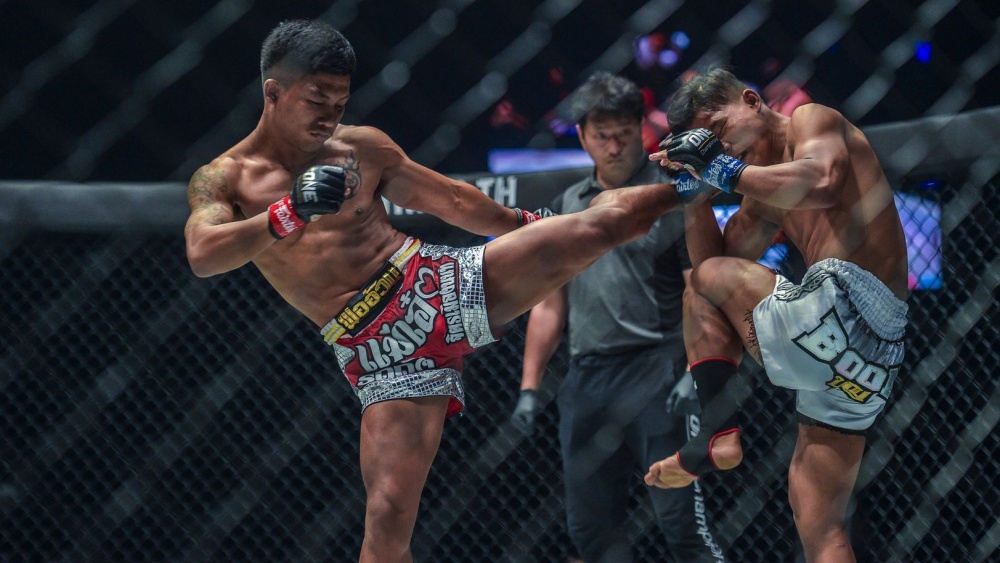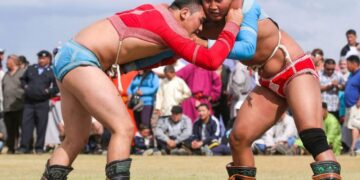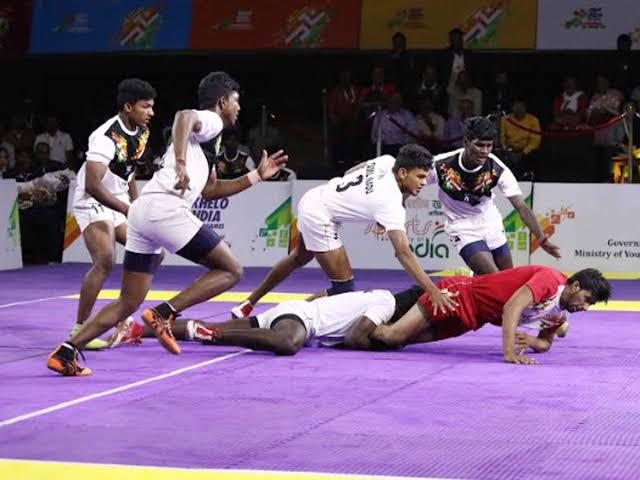
The switch kick is a fundamental kicking technique used in Muay Thai that has spread to other combat sports like mixed martial arts and kickboxing. It’s a crafty way to turn your lead leg (weaker leg) into a knockout-force-generating tool.
A switch kick can be aimed at any part of an opponent’s body, making it an effective way to surprise them with power from a side they might not expect.
This article will explore how to throw a switch kick correctly so you can add it to your fighting arsenal.
Understanding The Switch Kick
The switch kick is a technique that starts with a quick stance change so you can launch a powerful kick with your lead leg. Nothing is stopping you from throwing kicks with your lead leg, but they’re generally a lot less powerful than kicks thrown from your rear leg, just like with punches.
Throwing strikes from your rear side allows you to generate more power as you pivot your lead leg on the ground and turn your hips into the strike. Strikes thrown from your lead leg or arm aren’t just powerful because that’s typically your weak side. Moving it to the rear makes your weak side much more powerful.
The stance switch’s fluidity is what makes the switch kick so effective. When done correctly, the kick is fired the instant you enter your new stance, giving opponents little time to react.
How To Throw A Switch Kick: A Step-By-Step Guide
Here’s a step-by-step guide on how the switch kick works:
1) Start In Your Fighting Stance
Get into your usual fighting stance, typically orthodox (left foot forward) for righties and southpaw (right foot forward) for lefties. Keep your hands up, knees slightly bent, and weight-centered. Work on your stance if you find yourself leaning all over the place.
2) Switch Your Feet
The switch in this technique is a rapid, controlled shift where your rear foot replaces your front foot. Here’s how that works:
- Push off the ball of your front foot as you slide your rear foot forward while bringing back your front foot.
- Land softly with your new rear leg, ready to launch a kick. Your hips should turn 180 degrees during the switch.
3) Pivot Like You’re Squashing A Bug
Pivot the ball of your new front foot as soon as you throw the kick. This seemingly small rotation adds a lot more power to your kicks. You’ll generate much less power if your feet are planted as you throw.
4) Swing Your Leg Like You Mean It
Rotate your hips as you swing your legs toward your opponent. This hip rotation, combined with your lead leg pivot, is where much of your power comes from. You should land on your target with your shins while swinging your leg like a baseball bat for maximum power. Swing your lead arm down and keep your rear hand up while throwing to protect your head from counters.
You can also whip your leg toward your opponent, as martial arts like Karate teach, for a faster, less powerful kick.
Muay Thai fighters are the most feared kickers worldwide because of their unique approach to kicking. Throwing your leg like an axe leads to considerably more powerful kicks, but you lose some speed.
Pro Tip: While Muay Thai fighters typically aim to hit targets with their shins, there are exceptions to this rule. For example, experienced fighters often dig their toes into opponents when kicks are aimed at the body.
5) Return To Your Fighting Stance
Pull your leg back immediately after making an impact and reset your stance. Being slow to bring your leg back leaves you vulnerable to sweeps and leg catches.
Common Mistakes: How To Avoid Looking Like A Hot Mess
Even experienced fighters sometimes execute switch kicks poorly. Common mistakes to avoid include:
1) Mistake #1: Telegraphing Your Kick Like It’s A Postcard
Little things like taking a dramatic breath, dropping your hands, or rocking back before switching can telegraph your intent. Your stance switch should be low profile and quick, not a grand gesture that everyone watching the fight notices, regardless of how cool that sometimes looks. Ideally, the stance switch should be so smooth that your opponent misses it.
Mastering the switch kick’s mechanics is the best way to avoid telegraphing your intent. Drill the footwork slowly at first and gradually speed things up.
2) Mistake #2: Not Turning Into The Kick
Your power comes from turning your lead leg and hips as you throw the kick. Failing to do this turns your kick into a leg slap. A simple way to avoid this is to practice the switch and rotation without kicking. Drill consistently until pivoting right after a stance switch feels natural to you.
3) Mistake #3: Poor Balance
If you’re wobbly after your switch, you might be leaning too far forward or back. Work on your fighting stance so your weight is evenly balanced, and strengthen your stabilizer muscles, such as your core. You should also add drills that improve your overall balance to your training routine.
Drills To Improve Your Switch Kick
Some of the ways you can practice the switch kick’s mechanics until it becomes muscle memory include:
- Shadowboxing: Just because it’s called shadowboxing doesn’t mean you can’t use it to work on your kicks. Stand in front of a mirror while shadowboxing so you can focus on using proper techniques.
- Heavy Bag Drills: Once you’ve gotten down the switch kicks’ mechanics, it’s time to work on delivering powerful strikes. Work on both sides equally when performing heavy bag drills so you can land devastating switch kicks from both orthodox and southpaw stances.
- Partner Drills: Have a training partner hold pads and call for switch kicks randomly. This will improve your speed and ability to perform the technique quickly when opportunities arise.
Conclusion
The switch kick is a powerful technique that turns your lead leg into a potential fight-ending weapon, and it’s effective at the highest level of combat sports. Be sure to practice it regularly and watch how it enhances your fight game.
You may also like:
Reading Your Opponent: How To Spot Subtle Tells And Patterns During A Fight
Becoming a great fighter in martial arts requires more than strength, speed, or endurance—you must also be smart. While most martial artists typically aren’t viewed as the most cerebral members of society, there are clear…
There are a multitude of benefits that can be reaped from training Muay Thai. It can help you lose weight, build confidence, and immerse you in a vibrant lifestyle, rich in a culture that is…
The Muay Thai clinch is one of the most used techniques in striking and can also be used in grappling scenarios like Brazilian Jiu-Jitsu. Like the collar tie in grappling, the Muay Thai clinch can…
Low kicks play an interesting role in Muay Thai. They are powerful, effective, and landing several of them in a round can chip away at both a fighter’s speed and confidence. However, they rarely have…
Muay Thai is undergoing an unprecedented period of growth. In the early 1990’s it was a martial art, relatively unknown outside of Thailand and very few people could have predicted the enormous impact it would…
A Muay Khao is a dangerous opponent that many Nak Muays dread facing in the ring. This kind of fighter specializes in the most brutal aspects of Muay Thai, ranging from relentless forward aggression, sharp…
Feeling spent after an intense martial arts training session is something all fighters relate to. Rubbery legs, aching shoulders, and sore arms are often signs you’ve put in lots of hard work in the gym….
Singapore is known for its diverse and delicious food options, but eating out can get expensive. As inflation news hits the headlines regularly, you might wonder whether you can still find an affordable dining place…
It doesn’t sound like much, but journaling your martial arts journey helps you to reach your full potential. Dedicating yourself to martial arts often means learning several techniques weekly, drilling everything you’ve learned, and sparring…
The armbar is one of the most powerful and versatile submissions in BJJ. It is a fundamental technique taught to beginners yet remains a favorite among advanced practitioners and world champions. The armbar is effective…
Unstructured or more commonly known as ‘open’ sparring is a cornerstone of any martial art‘s fight preparation, and it’s the closest thing you can find in any gym to real competition. Structured sparring has its…
“Punch a black belt in the face; he becomes a brown belt. Punch him again, purple…” These are the words of Carlson Gracie, one of the pioneers of mixed martial arts. Playing guard in Brazilian…
































